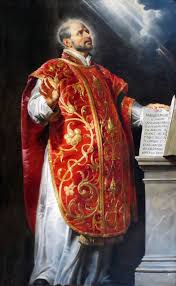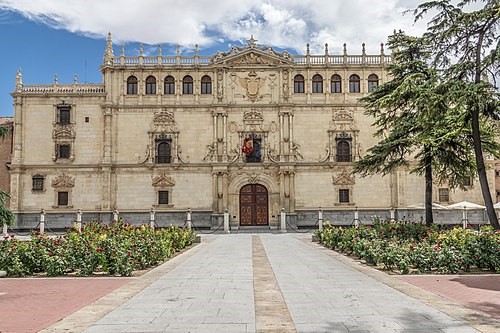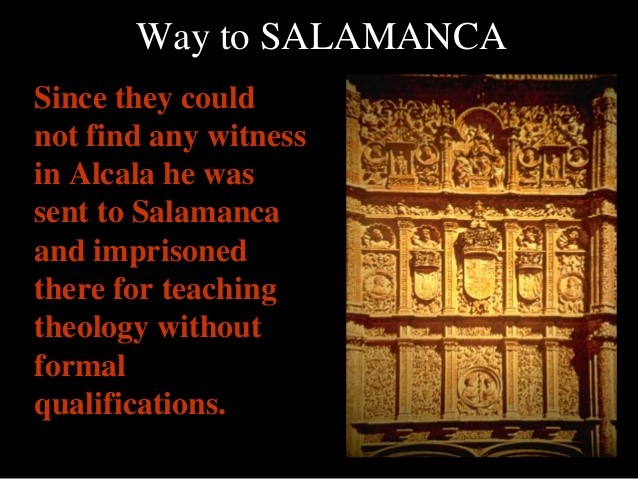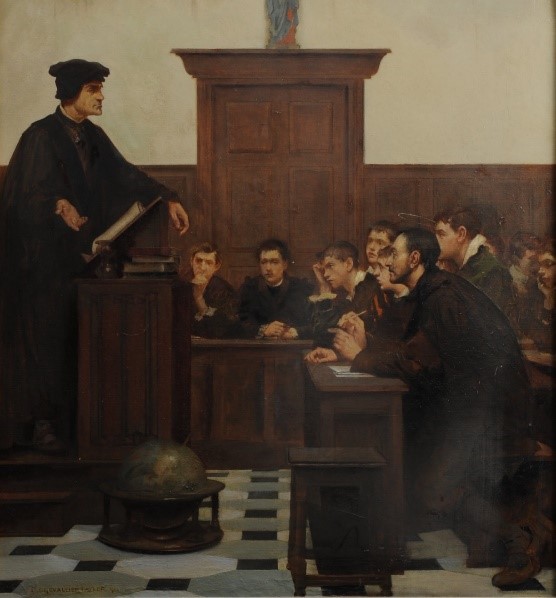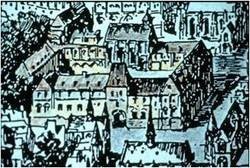July 21, 2020
His Story
JERUSALEM to PARIS 1523 – 1535
Ignatius was deeply affected by his visit to the holy land – the place of Jesus. He had toured the holy places as all pilgrims did. His last visit was to the Mount of Olives to see the footprints of Jesus, which according to tradition, were left on the stone when he ascended into Heaven.
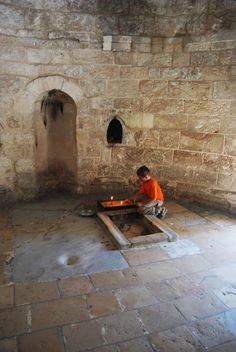
It was rather difficult to get free passage on a ship going back to Venice. Three ships left the Holy Land at approximately the same time. Two of them were shipwrecked because of storms; the small ship that carried Ignatius made it safely to Italy. The voyage took almost 3 months considering stops and weather conditions.
He spent some time in Venice before trying to go to Genoa in order to return to Barcelona.
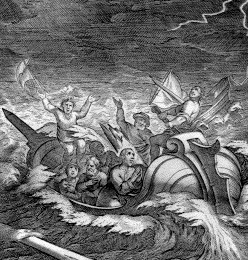
It was there in Venice that after some serious consideration for the future that he decided that he would make an effort to receive a proper education in order to better communicate God’s gift of grace in Jesus to others.
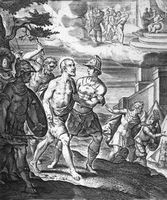
Ignatius would now have to travel from Venice to Genoa in order to get a ship to return to Barcelona. This overland trip took some time and was not without great difficulties. As in the past, he depended much on what he received by begging. In one city, the civil guard arrested him and treated him very badly before he was set free.
He was also captured by the French and treated rather well as their commander was from an area not far from his home in Loyola. The Spaniards he met along the way were quite kind and helpful to him. It was an adventurous time to travel.
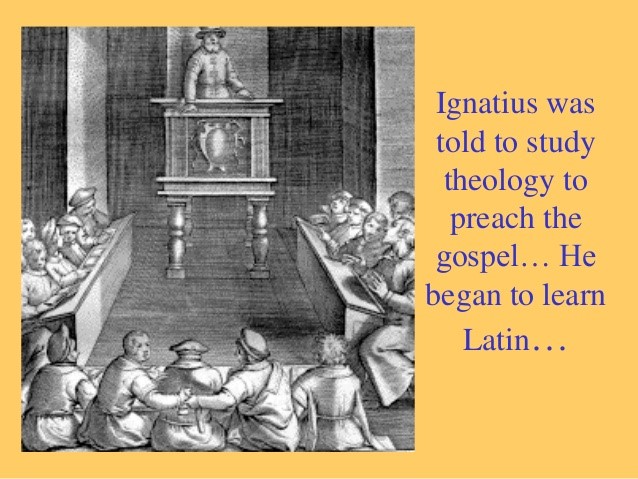
In March 1524, Ignatius arrived back in Barcelona. He began his begging for sustenance and his spiritual conversations with those who would listen. He often begged at the church of Sta Maria del Mar. He was helped much by a woman, Isabel Rosa, and other pious ladies and generous families.
Ignatius began to study Latin as that was the requisite language for further studies in the universities. Studies were not easy; his schoolmates were boys in their early teens and he was already 34.
He was ready now for further studies – classics, philosophy and theology. Encouraged by his teachers, in 1526 he went to study at the University of Alcala. Besides his studies, he gathered a few friends to share his spiritual insights. This latter cause some difficulty as he had not yet finished his studies. Three times he went before the Inquisition and during these times he and his companions were imprisoned. Ignatius saw that there was no future in Alcala.
He then moved to Salamanca for his further studies. It was 1527. Here, again, there were difficulties when he had gathered the small group to share conversation about spiritual matters. His views cause suspicion. He was questioned by the Dominican fathers and again by the Inquisition. He was found to be without fault, but he was told not to speak on spiritual matters until he had finished his studies. With all of this, Ignatius decided to move on to the University of Paris, the center of learning in Europe. But, as we shall see, events in reality moved way beyond what he had planned or even dreamed. He was beginning a new phase of his life.
At the University of Paris, Ignatius was accepted into the College of St Barbe. He would stay there during his time of studies until the time he would leave Paris in 1535. The college was not just classrooms, but more like a residence where young scholars lived and share their lives together.
Ignatius still had to beg for his sustenance. He generally went to northern Europe and even once to England. He received enough to take care of his needs and, as necessary, to take care of others.
He was most serious about studies as he understood they were the key to his effectiveness as a spiritual guide. But he also took time to meet new friends who would come under his influence and experience the wonderful power of the Spiritual Exercises. The first of these was a young Frenchman, Peter Fabre. He in turn brought along another friend from Navarre, Francis Xavier. Others also gathered around, mostly Spaniards. Over the years they would grow deep in friendship and, even more, companionship.
The radicalness of the companions, their lifestyle and Christ centered spirituality, cause some difficulties and again Ignatius was examined and again found to be without any faults or errors.
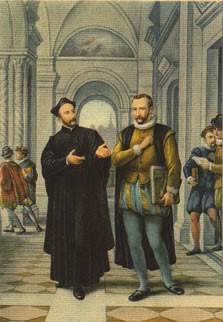
It would be hard to describe the years that this companionship held together. Their bond of fellowship was so strong that they agreed to spend their lives in the service of God and his Church.
This led them to join together at Holy Mass on the feast of Our Lady’s Assumption on August 15, 1534. At the time of the Holy Communion they made vows of poverty and chastity and that they would go on holy pilgrimage to Jerusalem. Peter Fabre, just recently ordained, celebrated the Holy Mass. They would stay together in Paris until they had finished their studies in 1535. Then leave for Venice in preparation for their pilgrimage to the Holy Land.
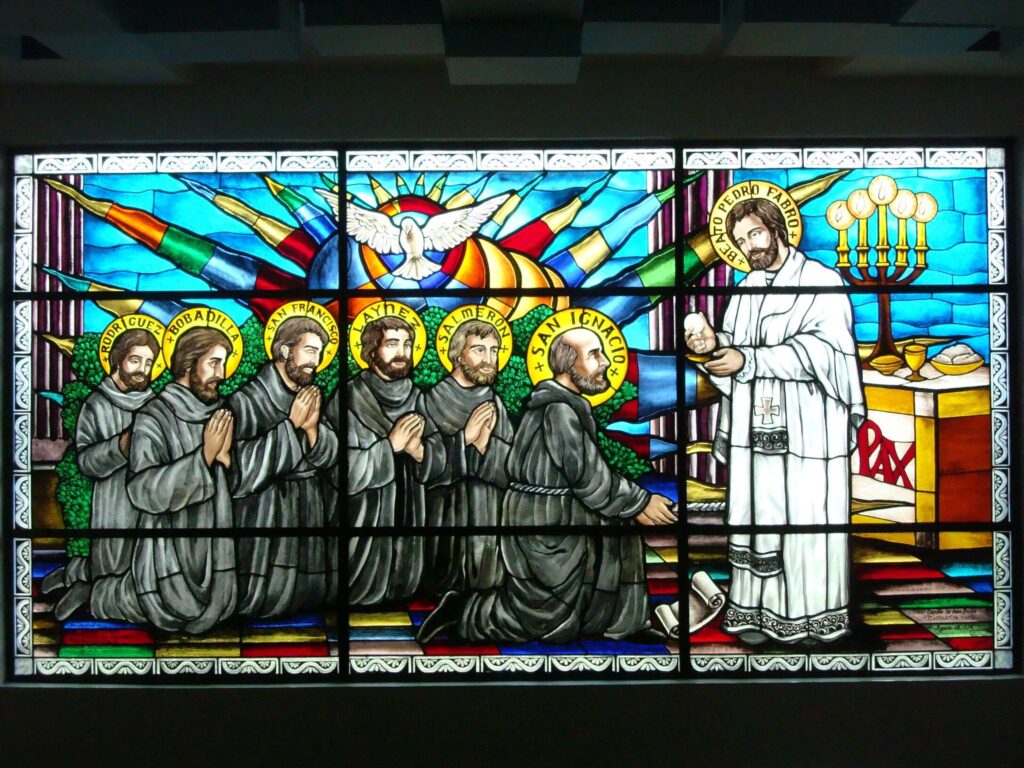
Reflection and Prayer
Trust and Reliance
On reading the autobiography of St. Ignatius one is quite struck by his trust in God’s providence – his unwillingness to make preparations for his pilgrimage was to be a sign of his dependence upon God’s graciousness; but along the way he did not hesitate to accept the help of people who were generous to him – he trusted that God will provide.
When he came back to Barcelona to begin his studies, it was the graciousness of pious women and families that allowed him to do the studies which he so greatly desired – for the greater glory of God –
Sometimes I wonder how much I trust in God – how much I trust in others – it sometimes is so difficult to feel God touching us – taking care of us. This trust in God and others is sometimes hard to reconcile with our own efforts – are these efforts themselves the effects of God’s grace for believers?
- Consider: What is my level of trust – and God – and others – and myself
- I pray as the father of the possessed boy prayed before Jesus, trusting in Jesus
“I believe – help my unbelief.” (Mark 4.9 – 23-24)
= = = = = = = = = = = = = = = = = = = = = = = = =
Focus and Effort
The first major focus of Ignatius was to make a pilgrimage to the Holy Land – he prayed, he planned and, he begged, and he went.
The second major focus was that he would study so as to better help others. He began this effort with the young boys in Barcelona – and finishing with his master’s degree at the University of Paris.
This did not stop him from prayer and from bringing others to Jesus that was, for sure, always a deep seated focus in Ignatius. Studies warn a means, not an end.
- Focus and Effort – take time to think this out in your own life situation
- Help me Lord to focus on You and all my task at hand – family, work, world situation – and give me the strength to accomplish fully and completely what you ask of me.
= = = = = = = = = = = = = = = = = = = = = = = = =
The Offering
When the early companions there in Paris, had considered their lives and what to do next, they conceived a plan to stay together and to offer themselves in God’s service.
Such an offering is not for a few – but, for all. It does not matter who we are or where we are what we are doing – we offer all for Gods glory and share the offering with others –
- Reflect slowly – consider who you are, where you are and what you are doing; all has value in God’s sight.
- Pray as we have been taught: Prayer for Generosity – Dearest Lord . . .
Father Bill Kreutz, SJ , Loyola House of Studies
Sources: Ignatius’ Autobiography; various Ignatian sites; Google Images
